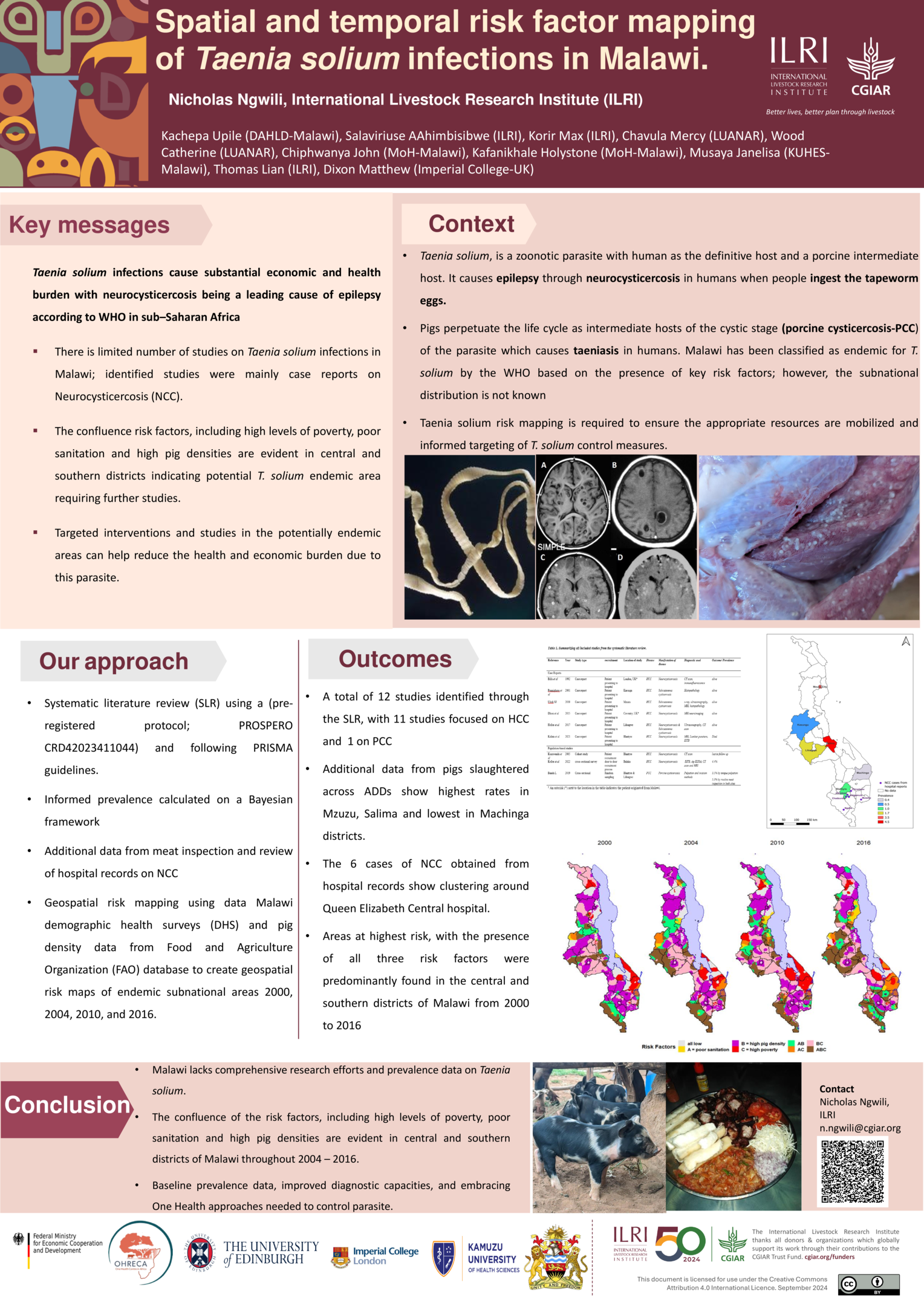
Description
Background
Taenia solium, colloquially called the pork tapeworm is a zoonotic parasite with human as the definitive host and a porcine intermediate host. Humans can become an aberrant intermediate host due to accidental ingestion of parasite eggs from the environment or through autoinfection. Pigs become infected with the larval stage (porcine cysticercosis; PCC) through the ingestion of parasite eggs shed by humans through defecation. Malawi has been classified as endemic for T. solium by the WHO based on the presence of key risk factors; however, the subnational distribution is not known. To ensure the appropriate resources are mobilised and informed targeting of future T. solium control measures are adopted in Malawi, there is need to understand the variation in T. solium endemicity status across the country.
Methods
The current study uses systematic literature review (SLR) using a (pre-registered protocol; PROSPERO CRD42023411044) to collate all available evidence on T. solium in Malawi and a geospatial risk mapping approach based on data from Malawi demographic health surveys (DHS) and pig density data from Food and Agriculture Organization (FAO) database to create geospatial risk maps of endemic subnational areas 2000, 2004, 2010, and 2016. To create a single composite risk factor map for the four years of the DHS, each parameter was plotted as a binary variable with the high or low risk categories and overlayed into a single composite risk factor classification.
Results
A total of 12 studies were identified through the SLR, with 11 studies focussed on HCC, including one study studying both HCC and PCC, and one study on PCC. During the period spanning the years 2000 to 2016, porcine cysticercosis risk factors varied substantially geographically (Figure 1). Areas at highest risk, with the presence of all three risk factors were predominantly found in the central and southern districts of Malawi across years. High pig density and poverty in combination were evident across Malawi in 2000, however these areas declined in northern districts between 2004 – 2016 while remaining in central districts (Figure 1).
Conclusions
Most studies identified from the SLR were case reports mostly focusing on HCC with very limited literature available in terms of population-based studies. The confluence risk factors, including high levels of poverty, poor sanitation and high pig densities are evident in central and southern districts indicating potential T. solium endemic area requiring further studies. Targeted interventions in the possibly hyperendemic area and that account for the economic and social challenges faced by impoverished communities can help bridge control Taenia solium infections.
Comments
Add new comment